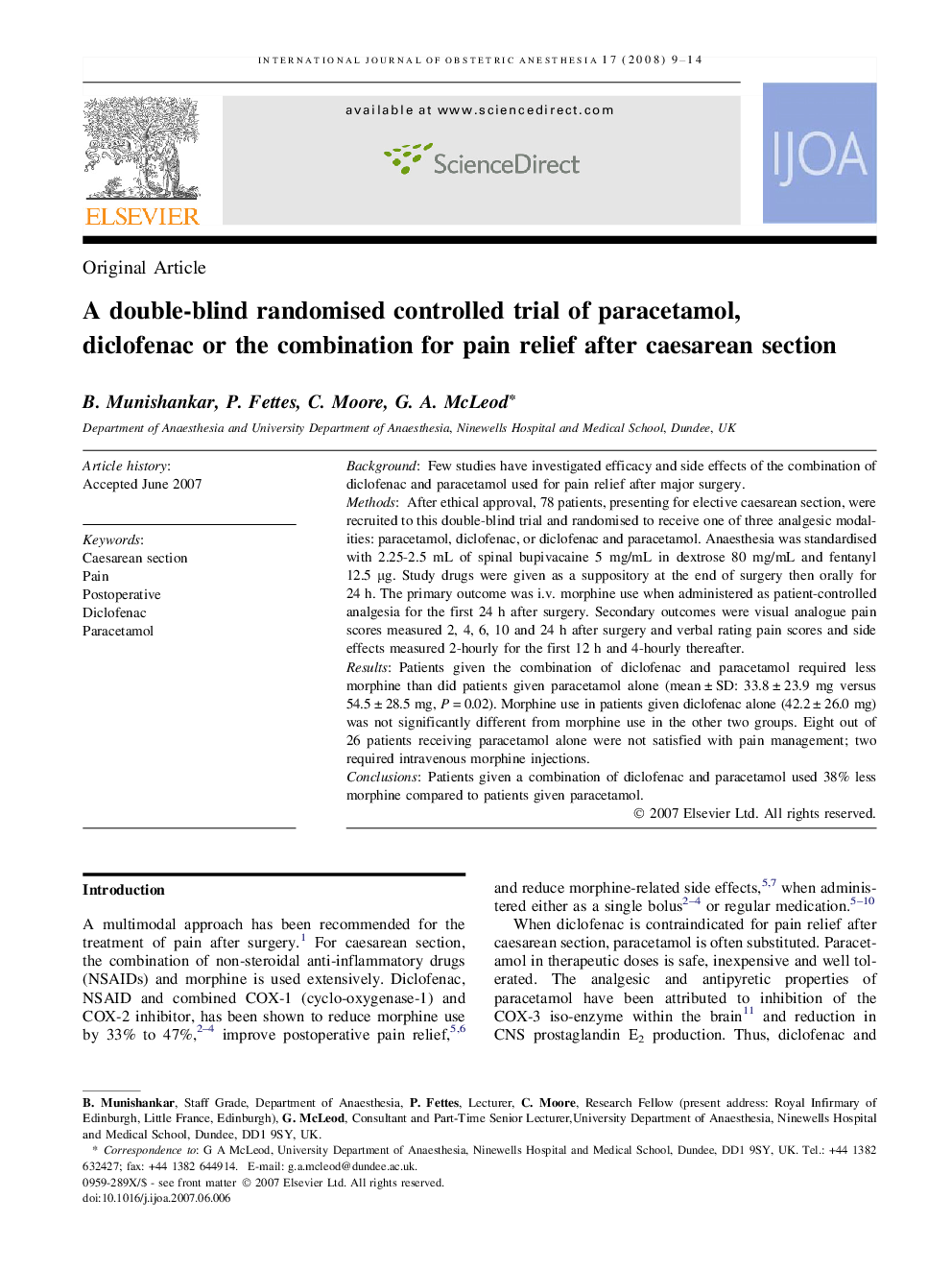| Article ID | Journal | Published Year | Pages | File Type |
|---|---|---|---|---|
| 2758080 | International Journal of Obstetric Anesthesia | 2008 | 6 Pages |
BackgroundFew studies have investigated efficacy and side effects of the combination of diclofenac and paracetamol used for pain relief after major surgery.MethodsAfter ethical approval, 78 patients, presenting for elective caesarean section, were recruited to this double-blind trial and randomised to receive one of three analgesic modalities: paracetamol, diclofenac, or diclofenac and paracetamol. Anaesthesia was standardised with 2.25-2.5 mL of spinal bupivacaine 5 mg/mL in dextrose 80 mg/mL and fentanyl 12.5 μg. Study drugs were given as a suppository at the end of surgery then orally for 24 h. The primary outcome was i.v. morphine use when administered as patient-controlled analgesia for the first 24 h after surgery. Secondary outcomes were visual analogue pain scores measured 2, 4, 6, 10 and 24 h after surgery and verbal rating pain scores and side effects measured 2-hourly for the first 12 h and 4-hourly thereafter.ResultsPatients given the combination of diclofenac and paracetamol required less morphine than did patients given paracetamol alone (mean ± SD: 33.8 ± 23.9 mg versus 54.5 ± 28.5 mg, P = 0.02). Morphine use in patients given diclofenac alone (42.2 ± 26.0 mg) was not significantly different from morphine use in the other two groups. Eight out of 26 patients receiving paracetamol alone were not satisfied with pain management; two required intravenous morphine injections.ConclusionsPatients given a combination of diclofenac and paracetamol used 38% less morphine compared to patients given paracetamol.
